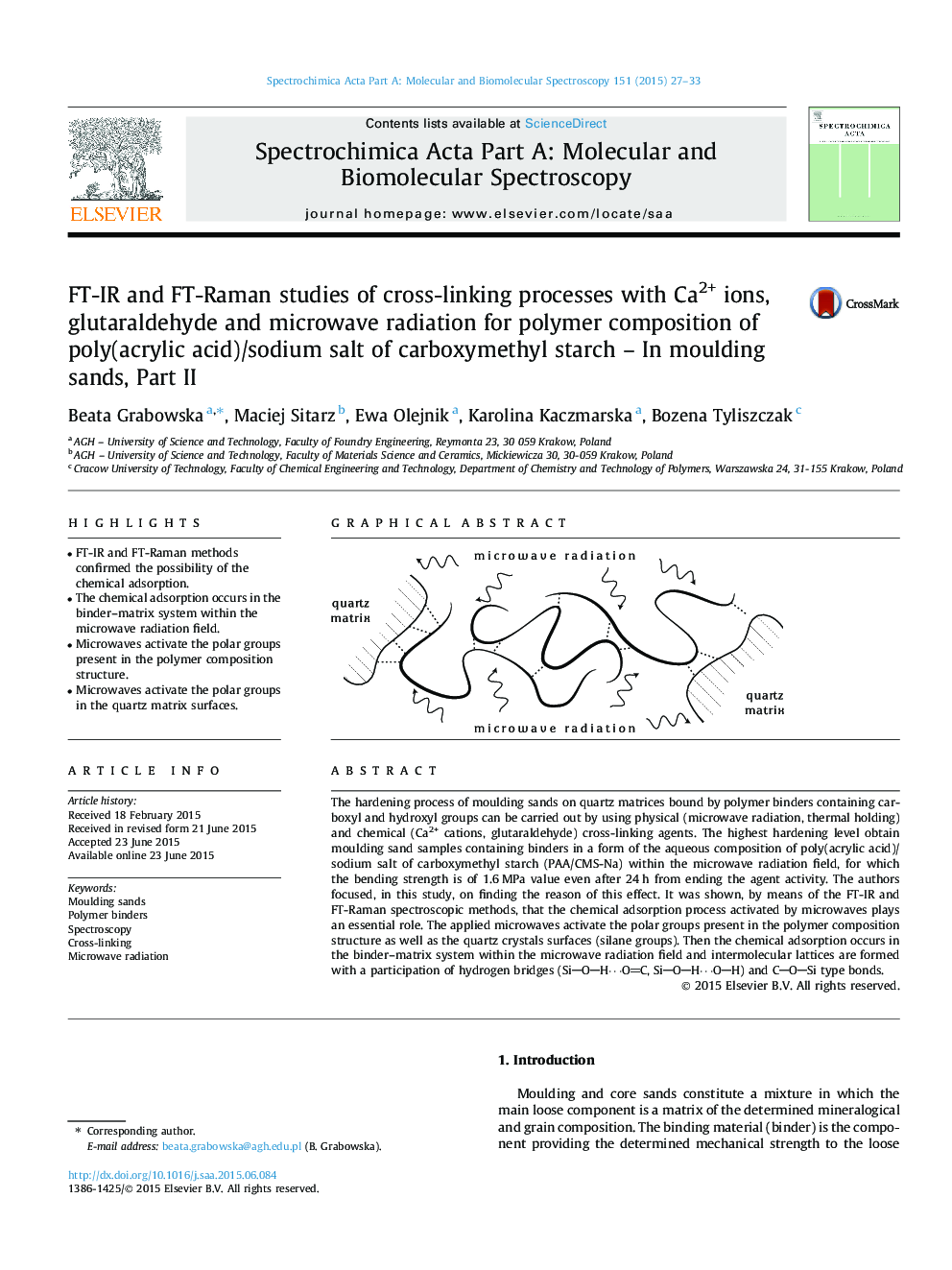| Article ID | Journal | Published Year | Pages | File Type |
|---|---|---|---|---|
| 1230049 | Spectrochimica Acta Part A: Molecular and Biomolecular Spectroscopy | 2015 | 7 Pages |
•FT-IR and FT-Raman methods confirmed the possibility of the chemical adsorption.•The chemical adsorption occurs in the binder–matrix system within the microwave radiation field.•Microwaves activate the polar groups present in the polymer composition structure.•Microwaves activate the polar groups in the quartz matrix surfaces.
The hardening process of moulding sands on quartz matrices bound by polymer binders containing carboxyl and hydroxyl groups can be carried out by using physical (microwave radiation, thermal holding) and chemical (Ca2+ cations, glutaraldehyde) cross-linking agents. The highest hardening level obtain moulding sand samples containing binders in a form of the aqueous composition of poly(acrylic acid)/sodium salt of carboxymethyl starch (PAA/CMS-Na) within the microwave radiation field, for which the bending strength is of 1.6 MPa value even after 24 h from ending the agent activity. The authors focused, in this study, on finding the reason of this effect. It was shown, by means of the FT-IR and FT-Raman spectroscopic methods, that the chemical adsorption process activated by microwaves plays an essential role. The applied microwaves activate the polar groups present in the polymer composition structure as well as the quartz crystals surfaces (silane groups). Then the chemical adsorption occurs in the binder–matrix system within the microwave radiation field and intermolecular lattices are formed with a participation of hydrogen bridges (SiOH⋯OC, SiOH⋯OH) and COSi type bonds.
Graphical abstractFigure optionsDownload full-size imageDownload as PowerPoint slide
